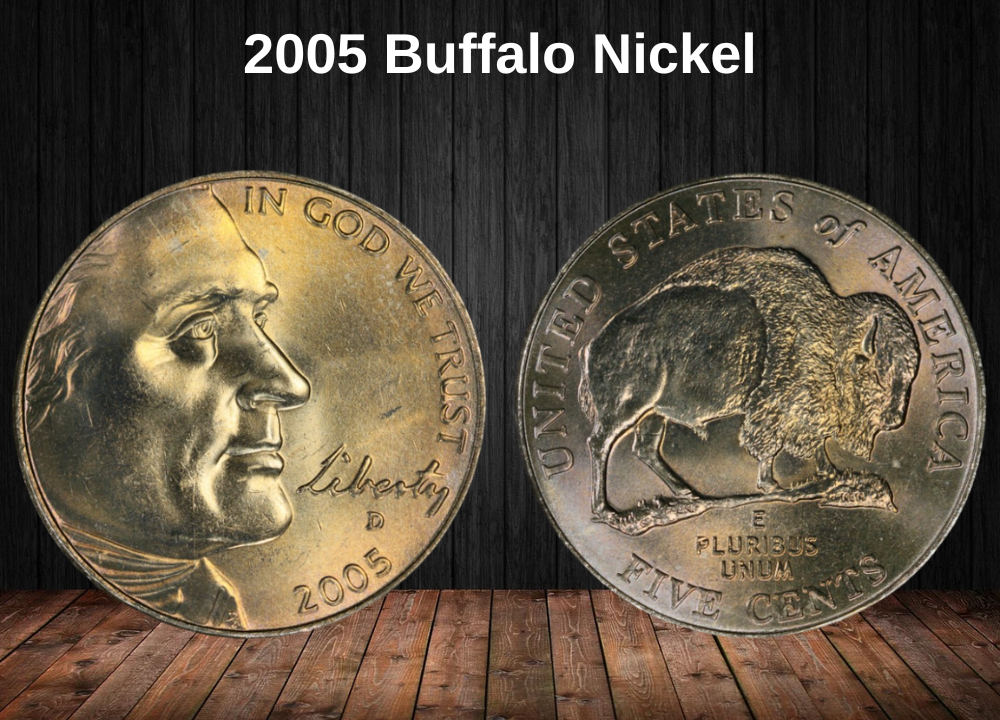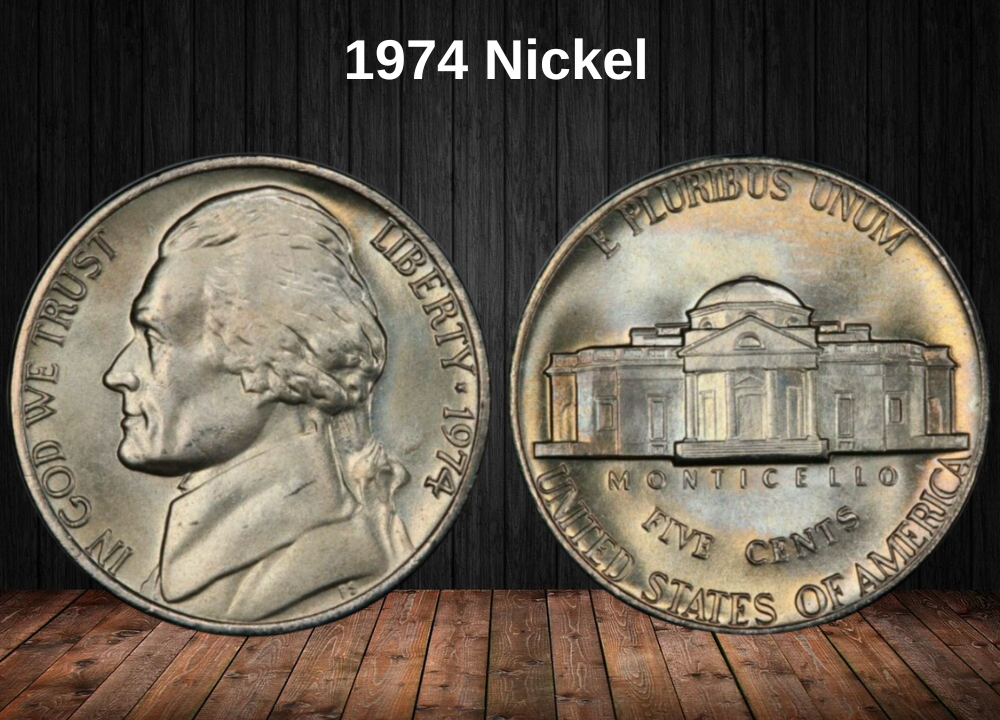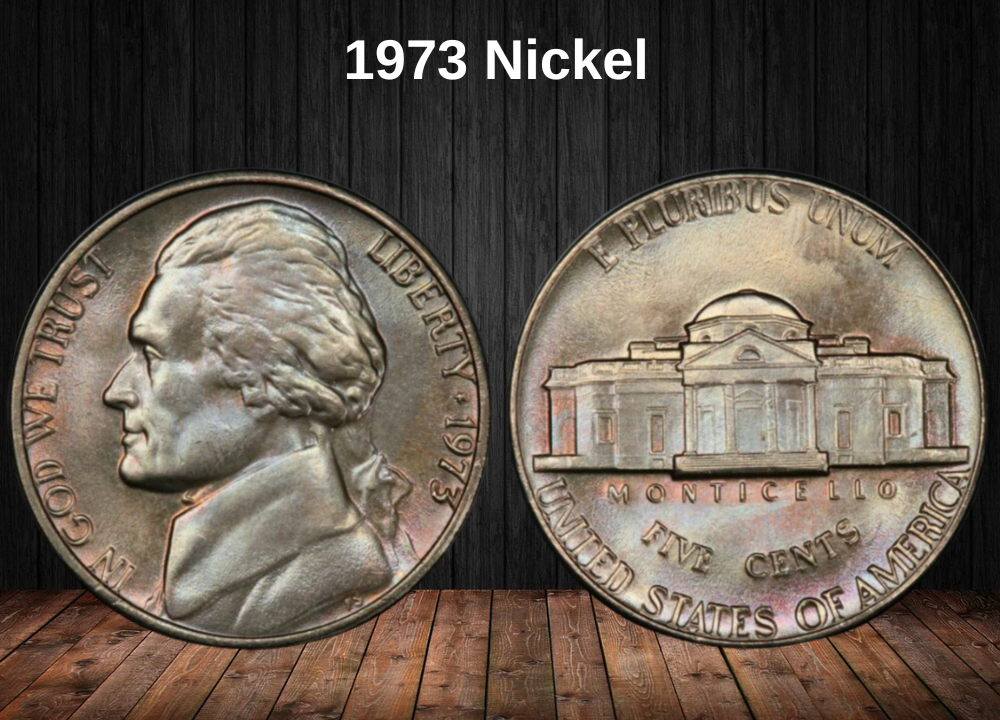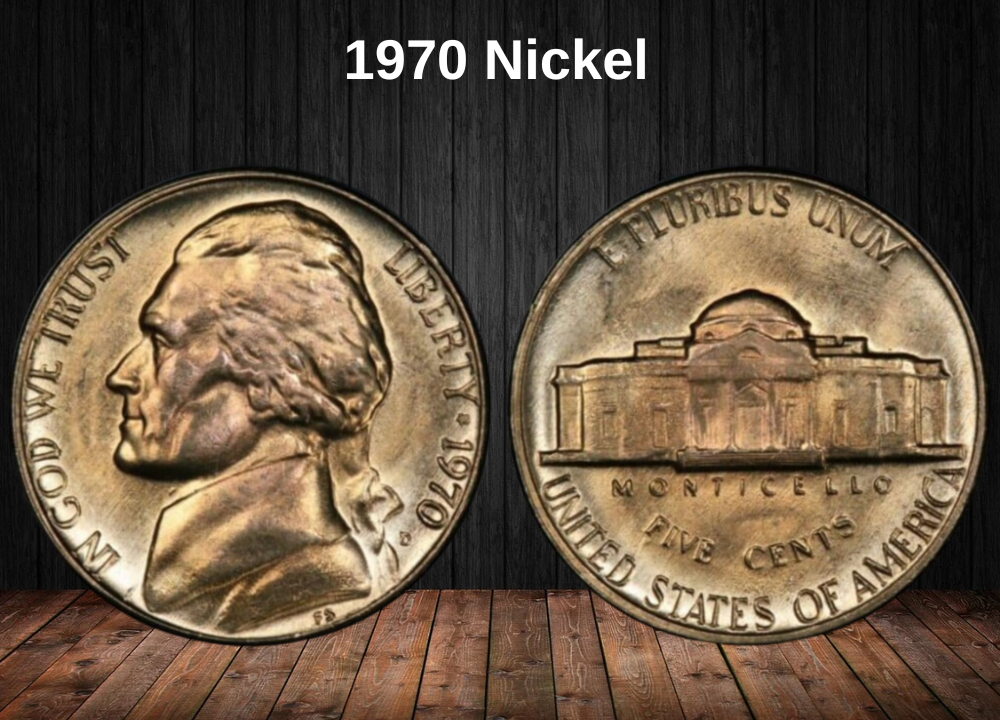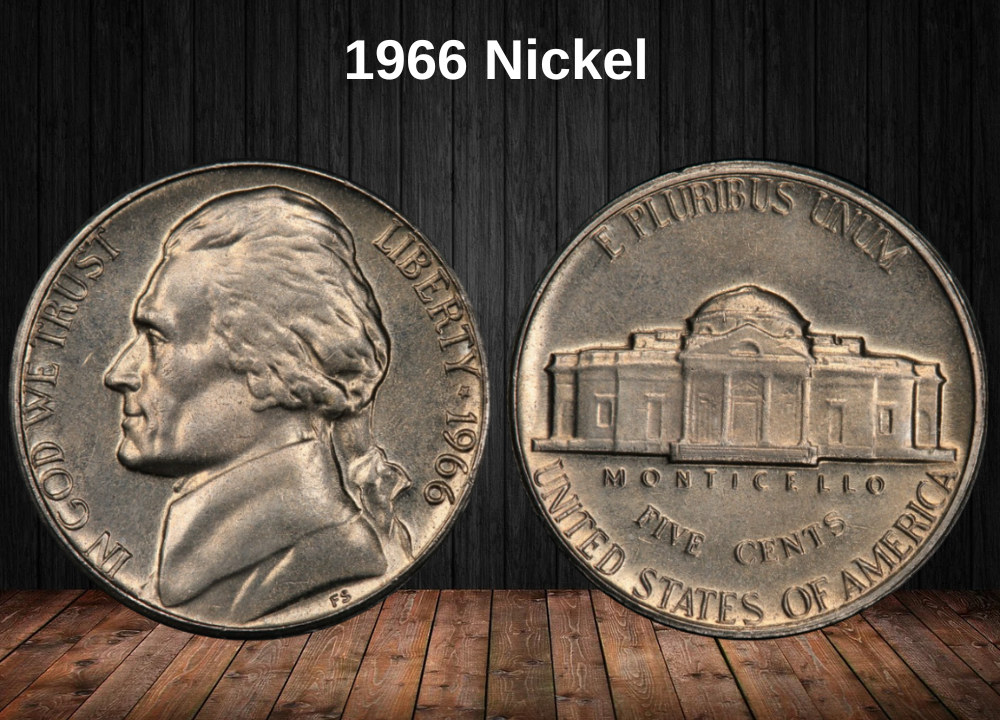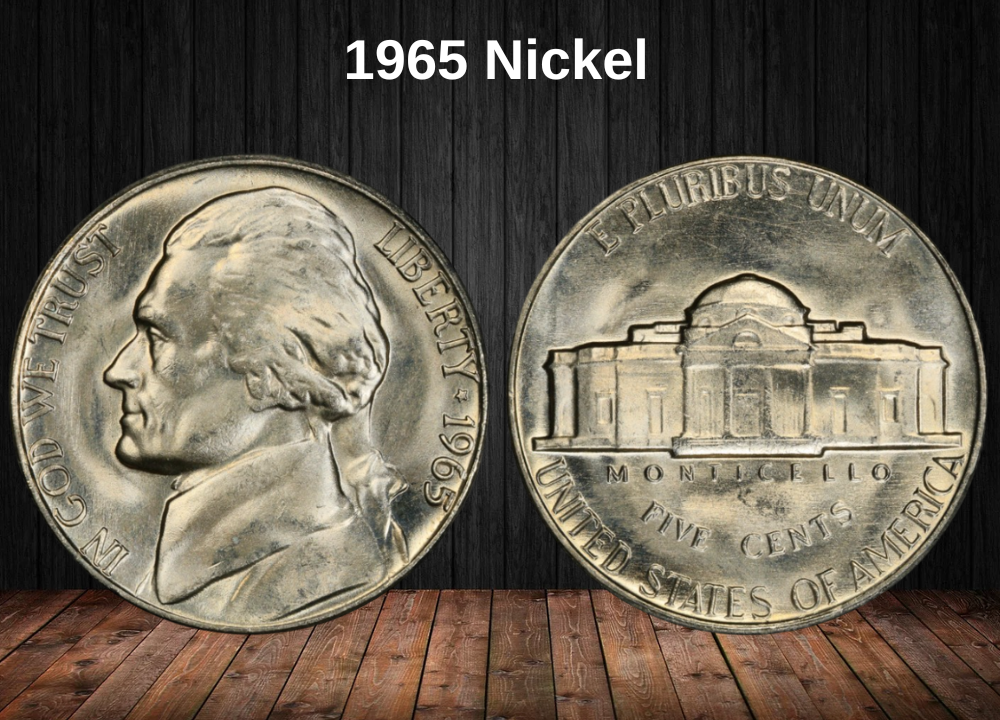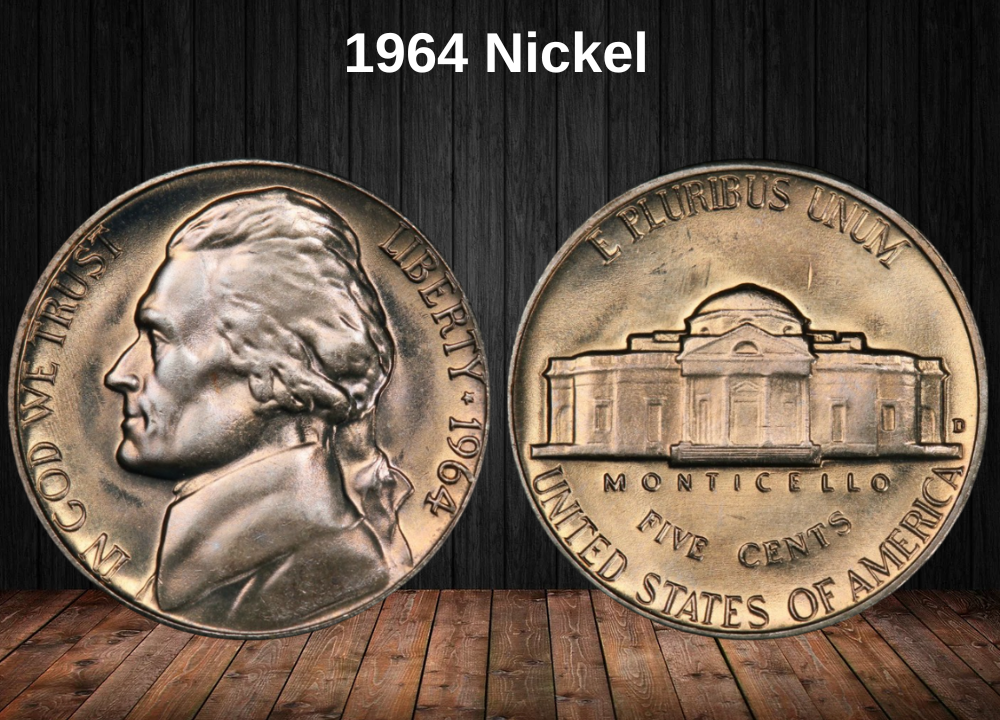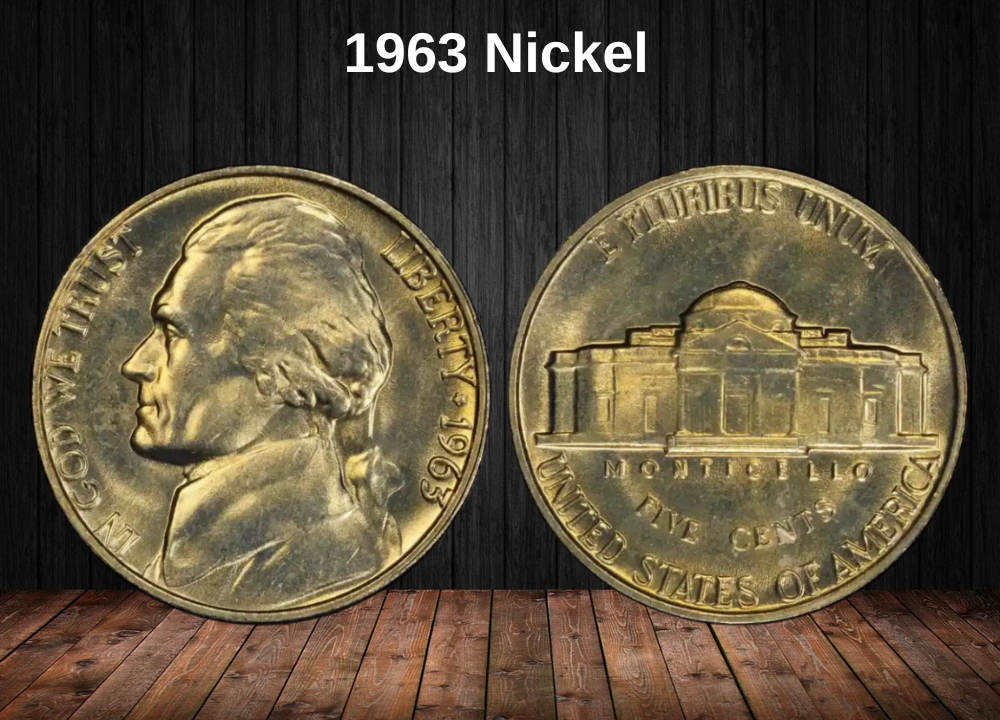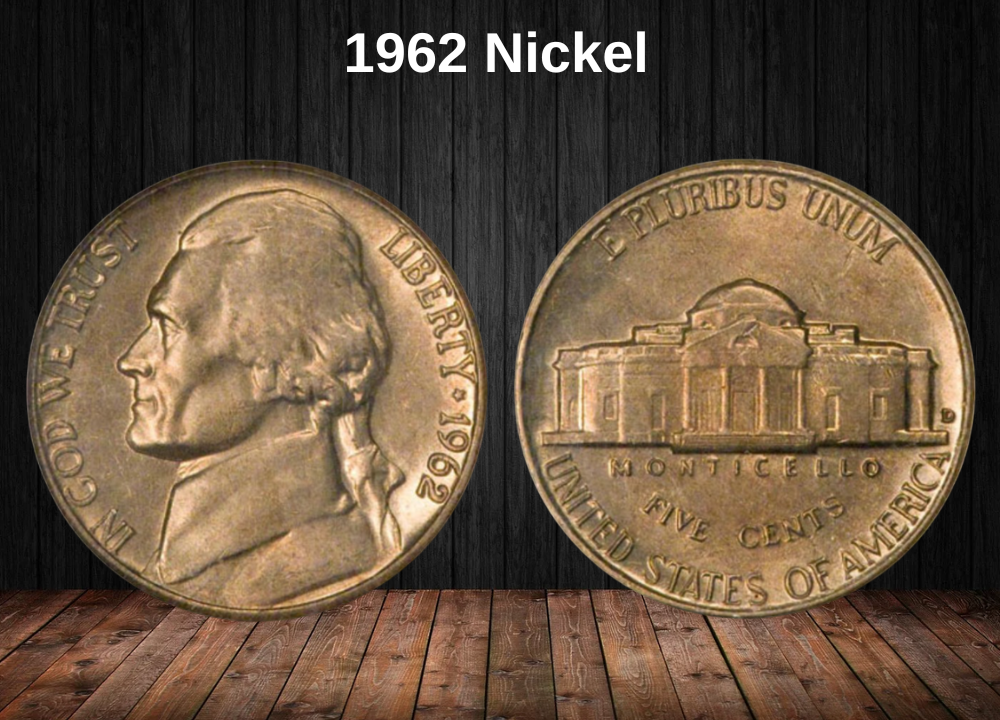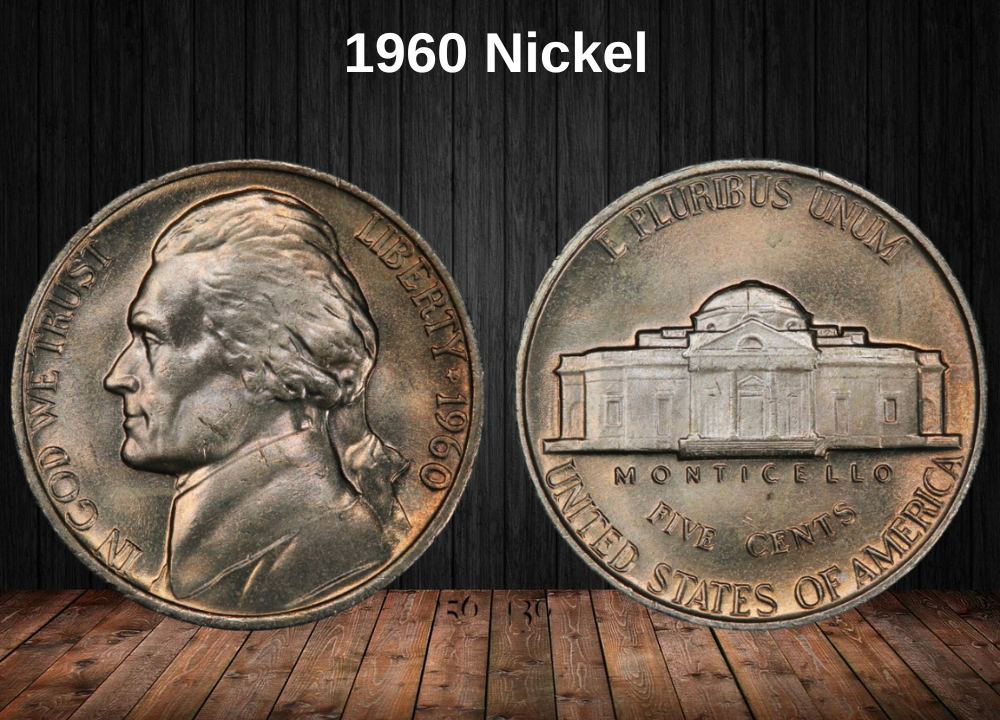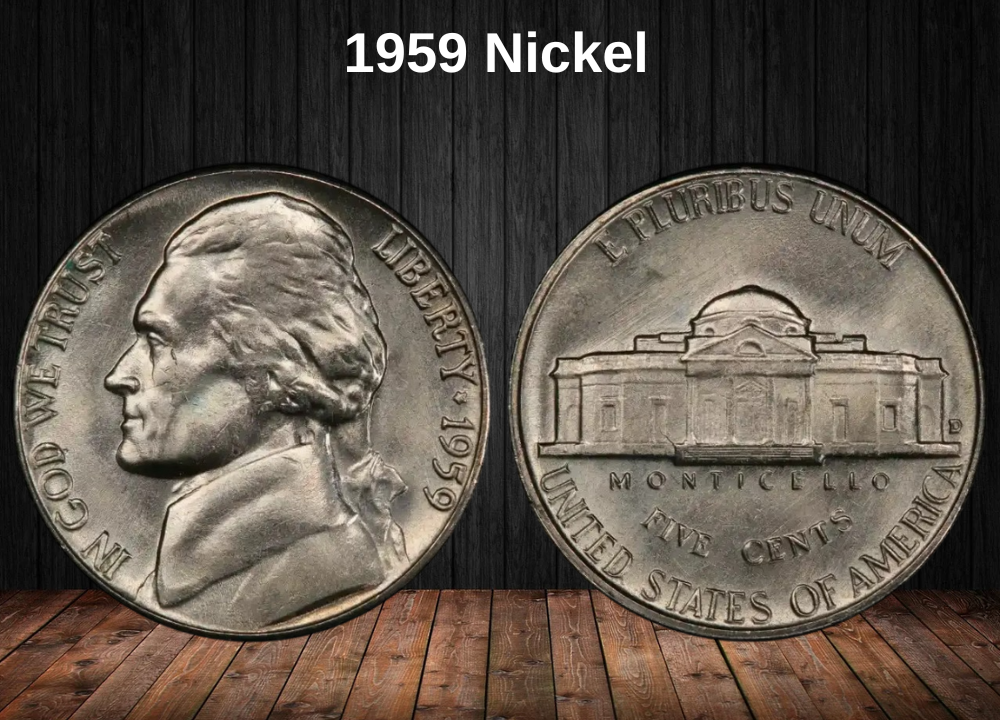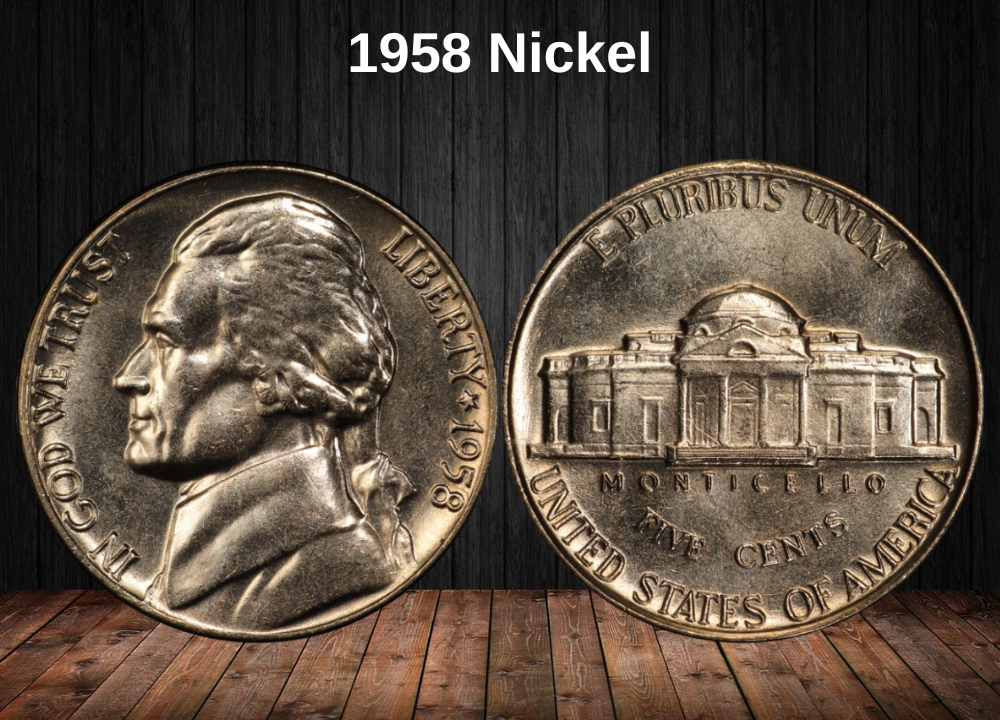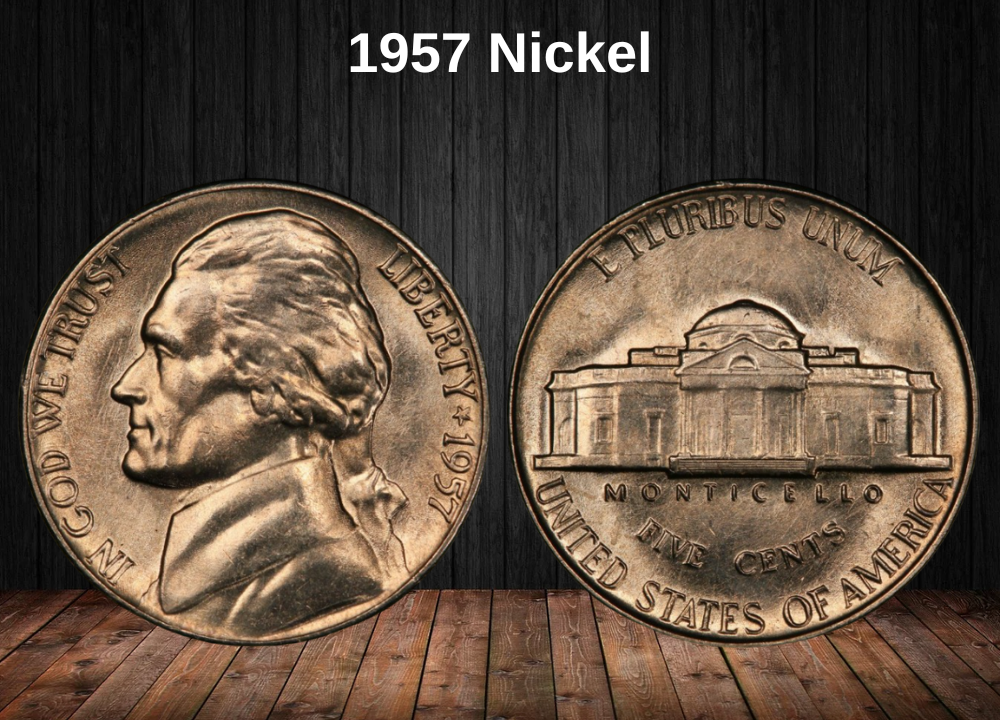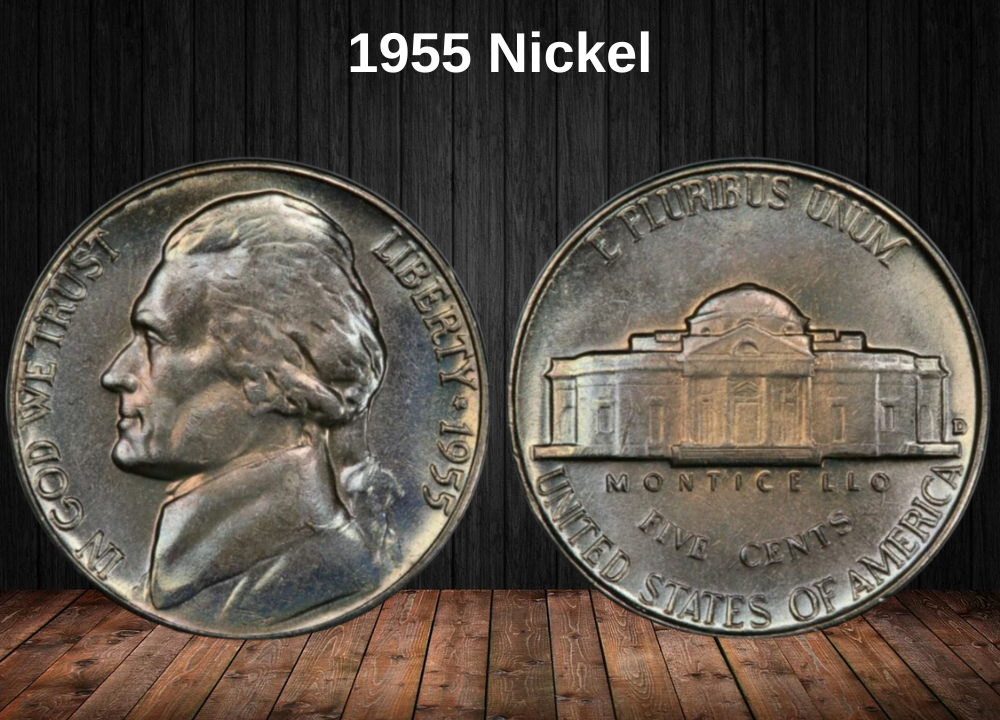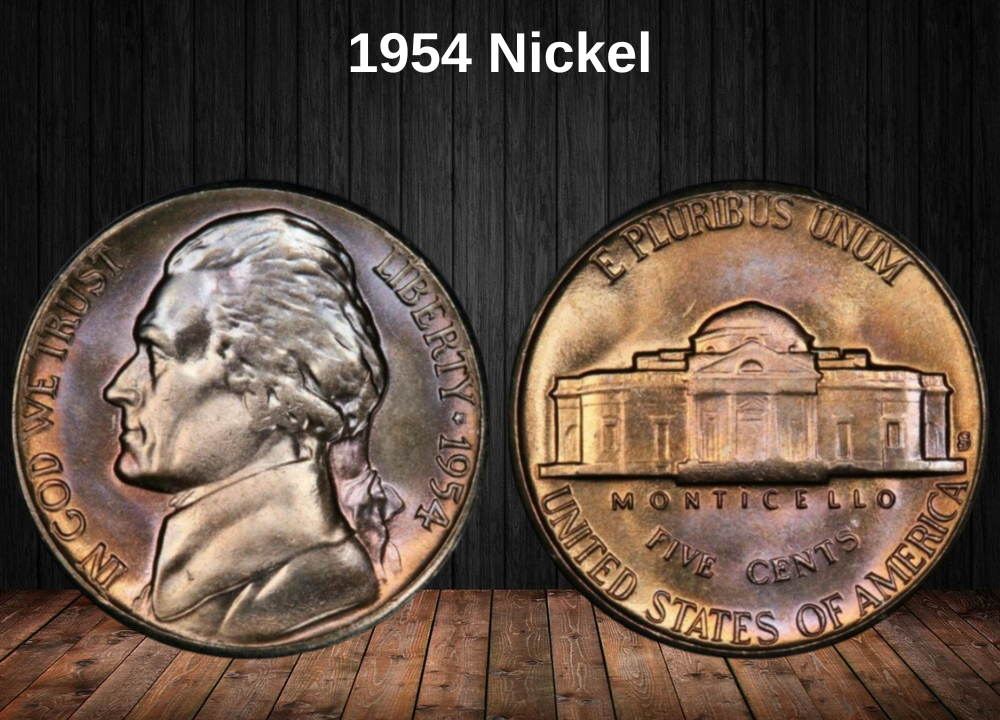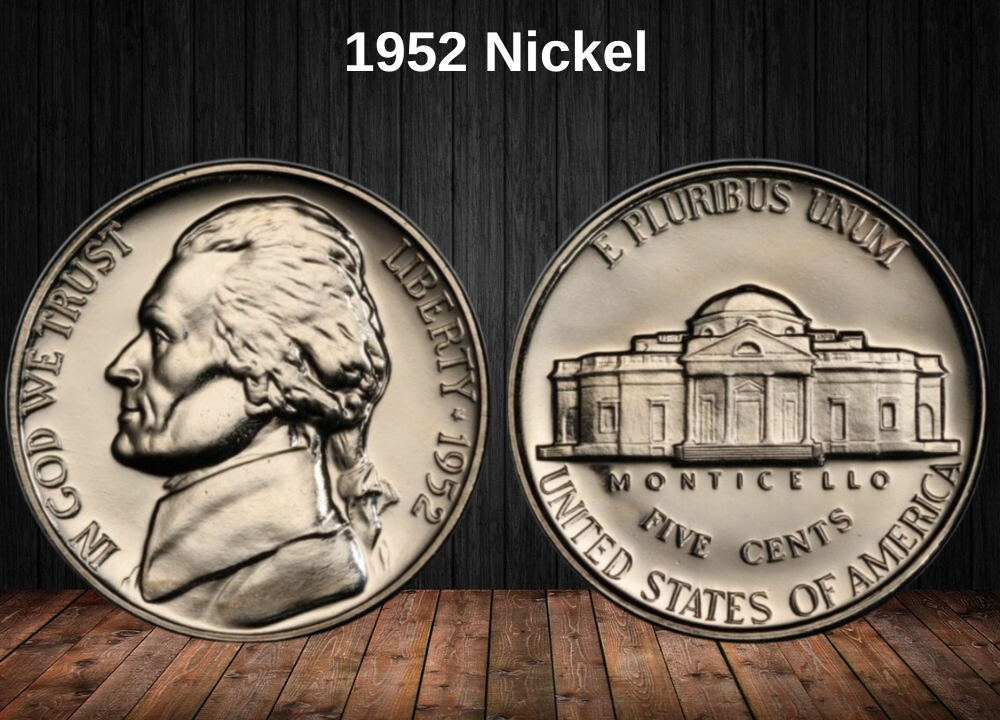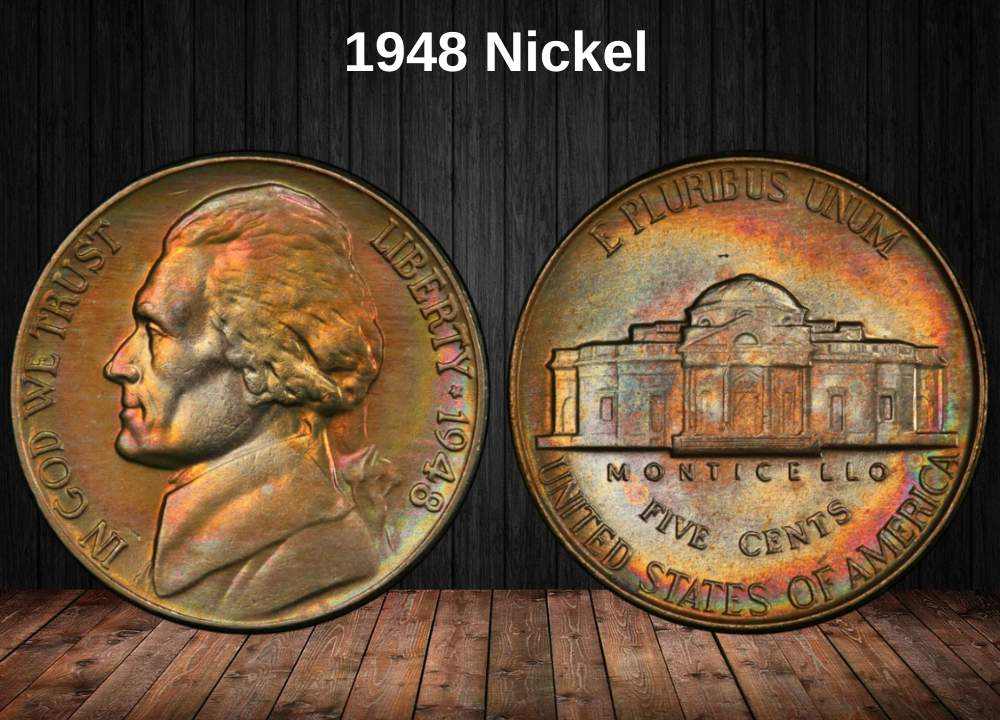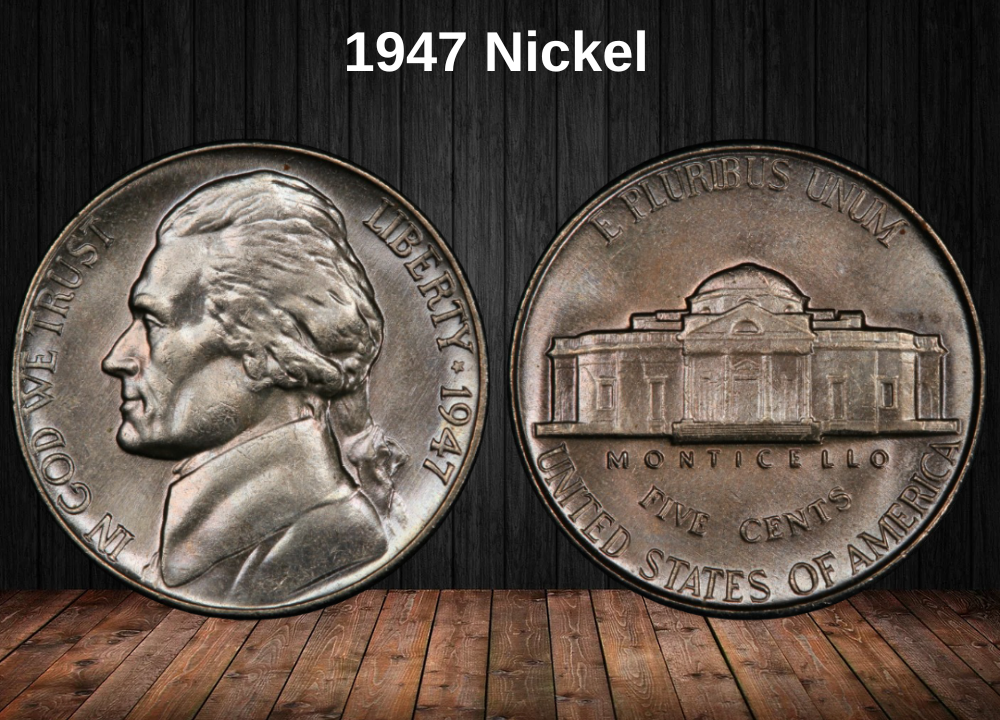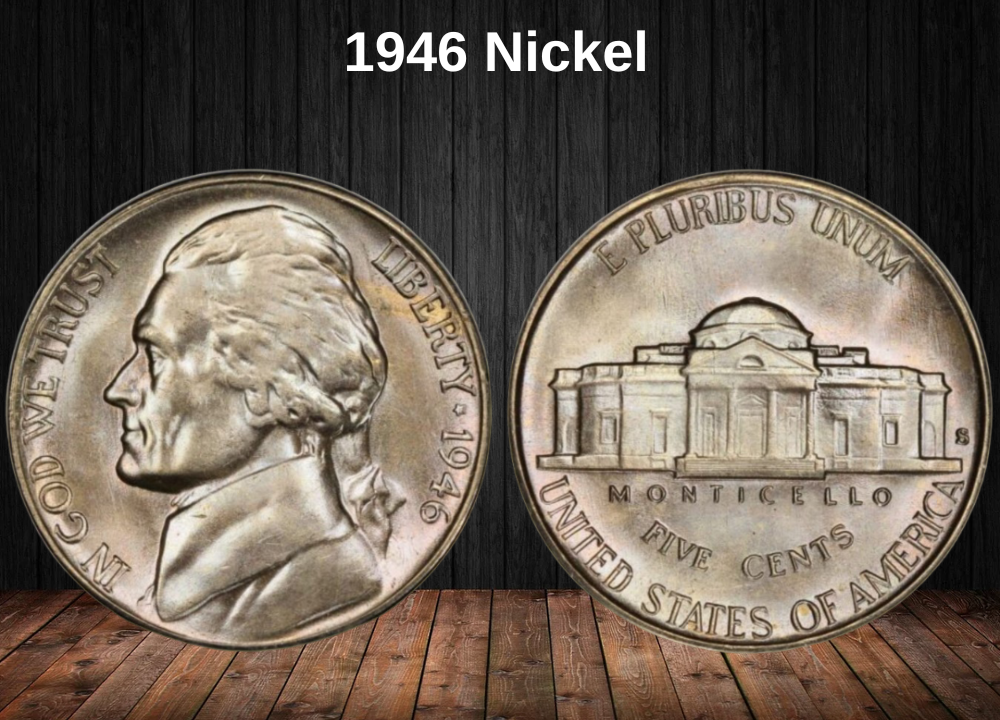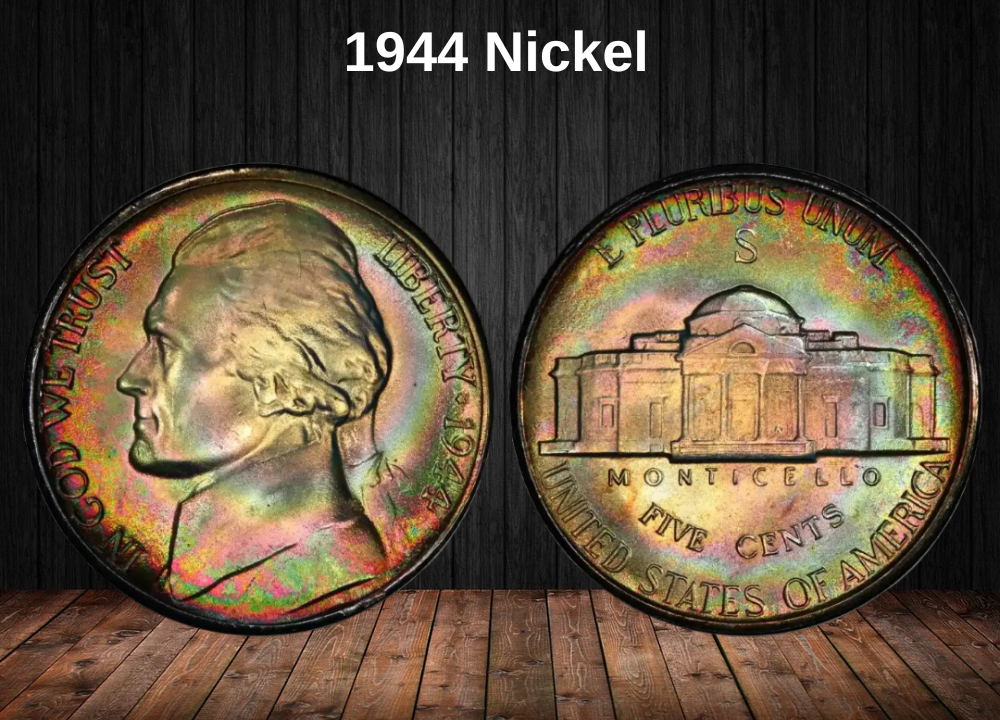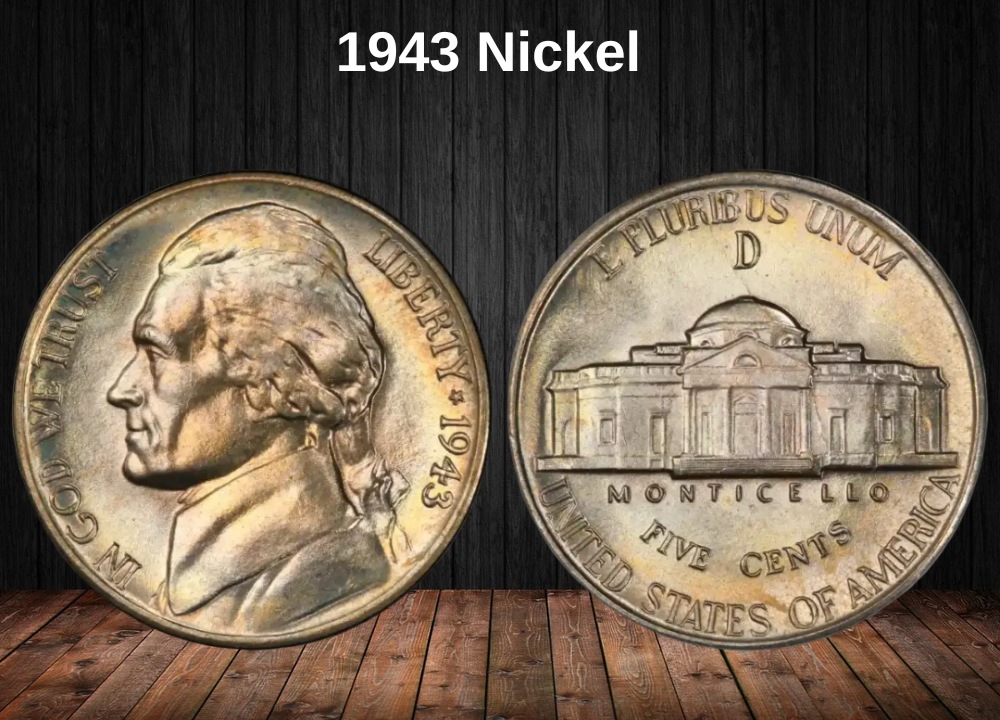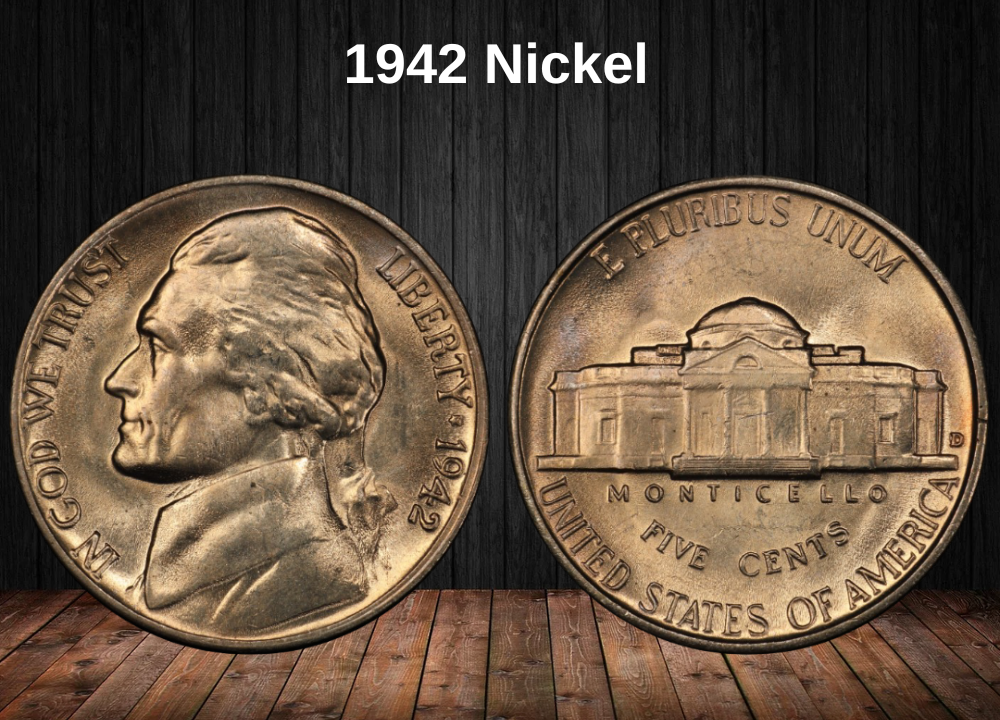The nickname “nickel” is so ingrained in American culture that it’s even part of pop culture — yes, even the famously polarizing Canadian rock band Nickelback gets a nod here! But for collectors, the 1939 nickel holds a special place as a semi-key date in the series of 5-cent coins.
The year 1939 marked the second year this nickel design was issued, and the coin exists in several variations, making its value range quite broad depending on mint mark, reverse type, and condition.
1939 Nickel Value Chart
| Coin Type | EF/XF 45 | MS 60 | MS 65 | MS 66+ | MS 67+ | Proof PR/PF 68 |
|---|---|---|---|---|---|---|
| 1939-S Reverse of ‘38 Nickel | $6 | $24 | $70 | $150 | $850 | – |
| 1939-S Reverse of ‘38 Nickel Full Steps | – | $45 | $275 | $900 | – | – |
| 1939-D Reverse of ‘38 Nickel | $16 | $40 | $110 | $160 | $750 | – |
| 1939-D Reverse of ‘38 Nickel Full Steps | – | – | $425 | $700 | $3,100 | – |
| 1939 (P) No Mint Mark Reverse of ‘38 Nickel | $1 | $5 | $30 | $75 | $550 | – |
| 1939 (P) No Mint Mark Reverse of ‘38 Nickel Full Steps | – | – | $125 | $485 | $5,000 | – |
| 1939-S Reverse of ‘40 Nickel | $6 | $16 | $125 | $375 | – | – |
| 1939-S Reverse of ‘40 Nickel Full Steps | – | $24 | $265 | $2,600 | – | – |
| 1939-D Reverse of ‘40 Nickel | $10 | $37 | $80 | $175 | $750 | – |
| 1939-D Reverse of ‘40 Nickel Full Steps | – | $40 | $275 | $1,950 | $5,000 | – |
| 1939 (P) No Mint Mark Reverse of ‘40 Nickel | $4 | $6 | $38 | $85 | $400 | – |
| 1939 (P) No Mint Mark Reverse of ‘40 Nickel Full Steps | – | $10 | $70 | $175 | $875 | – |
| 1939 (P) No Mint Mark Proof Nickel Reverse of ‘38 | – | – | – | – | – | $4,750 |
| 1939 (P) No Mint Mark Proof Nickel Reverse of ‘40 | – | – | – | – | – | $14,500 |
History of the 1939 Nickel

The nickel—the familiar five-cent coin—gets its name from the metal it’s primarily made of: nickel. However, it wasn’t the first coin to feature nickel in its composition. That distinction goes to earlier small denominations, like the two-cent coin (1864–1873) and the three-cent piece (1865–1889). Interestingly, during that era, a postage stamp cost five cents, and this amount was called a “half dime” or “half disme” (pronounced “deem,” with a silent “s”). Congress aimed to reduce the postage rate to three cents with a bill passed in 1851.
This move coincided with the California Gold Rush of the 1850s, which made gold more accessible and caused the prices of other metals—especially silver—to rise sharply due to scarcity. In response, the Mint experimented with new coin compositions, introducing coins made from 75% copper and 25% nickel for the two-cent and three-cent denominations. These proved successful and eventually replaced silver coins, including the five-cent piece.
The first official nickel five-cent coin was introduced in 1866, designed by James B. Longacre, then Chief Engraver of the U.S. Mint. In 1883, the design evolved to the Liberty Head or “V” nickel, created by Charles Barber, Longacre’s successor.
The Buffalo nickel, unveiled in 1913, marked a significant departure. This design came from James Earle Fraser, a commercial sculptor outside the Mint, who crafted an iconic Native American profile on the obverse and a buffalo on the reverse.
The year 1938 saw the Buffalo nickel retire, replaced by the new Jefferson nickel—both designs were minted during that year. The 1939 nickel is often viewed as a semi-key date in the series, especially notable among Denver mint issues.
The Jefferson nickel was designed by Felix Oscar Schlag, who won a competition and received a prize of $1,000 for his design. Tragically, that year was difficult for Schlag personally, as it is said he used the entire prize to cover funeral expenses for his wife.
Features of the 1939 Nickel
If you want to sound confident talking about coins, it helps to know the right terminology. Here are some basic terms to get you started:
- The heads side of a coin is called the obverse.
- The tails side is known as the reverse.
- The thin edge around the coin is simply called the edge, and sometimes it can be reeded (with tiny grooves).
- The raised border along the outer rim of the coin is called the collar or rim.
- The words inscribed on the coin are called legends or mottos.
- The images—like portraits or animals—are known as devices.
- The flat background behind these images is called the field.
Mastering these terms can help you better describe and appreciate the details of any coin, including the 1939 nickel.
The Obverse of the 1939 Nickel
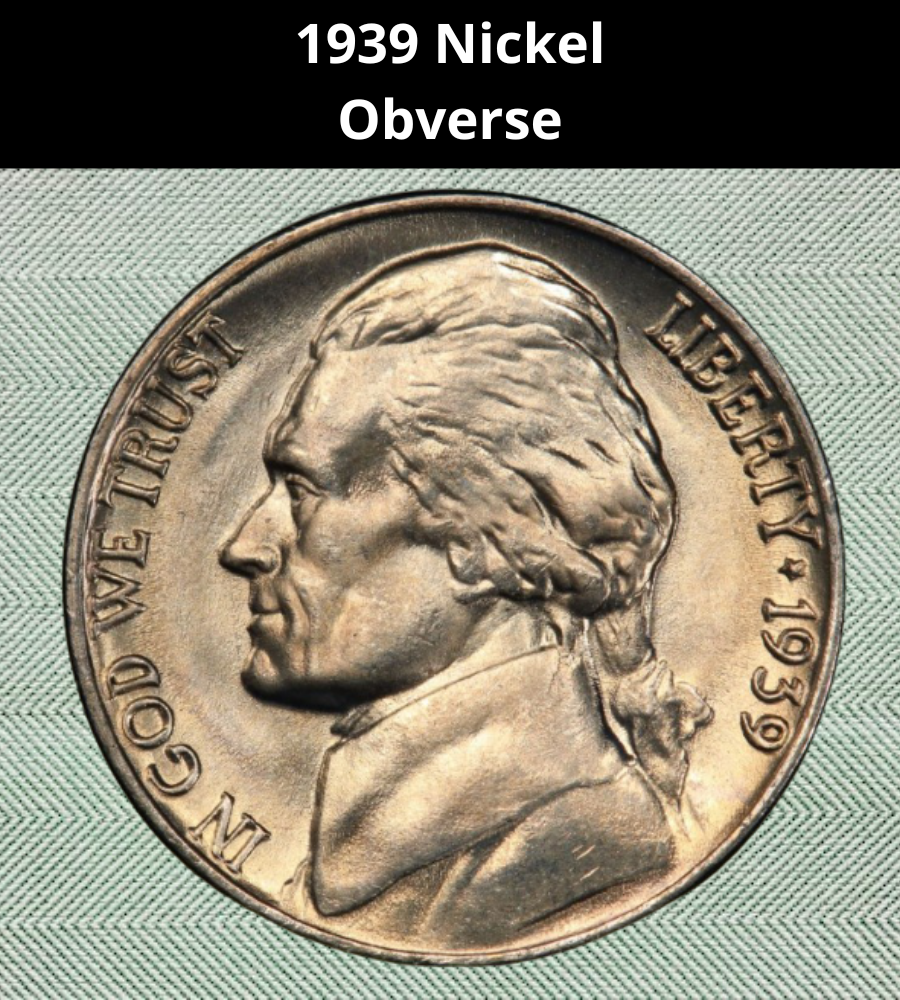
The front of the 1939 nickel, known as the obverse, features a left-facing portrait of Thomas Jefferson, the third President of the United States.
Along the left edge, curving in front of Jefferson’s face, is the national motto: “IN GOD WE TRUST.” On the right side, the word “LIBERTY” follows the curve of the rim, followed by a five-pointed star and the minting year, 1939.
Notably, this design does not include the designer’s initials, as the “FS” (for Felix Schlag) wasn’t added until 1966, several decades after this coin was released.
The reverse of the 1939 Nickel
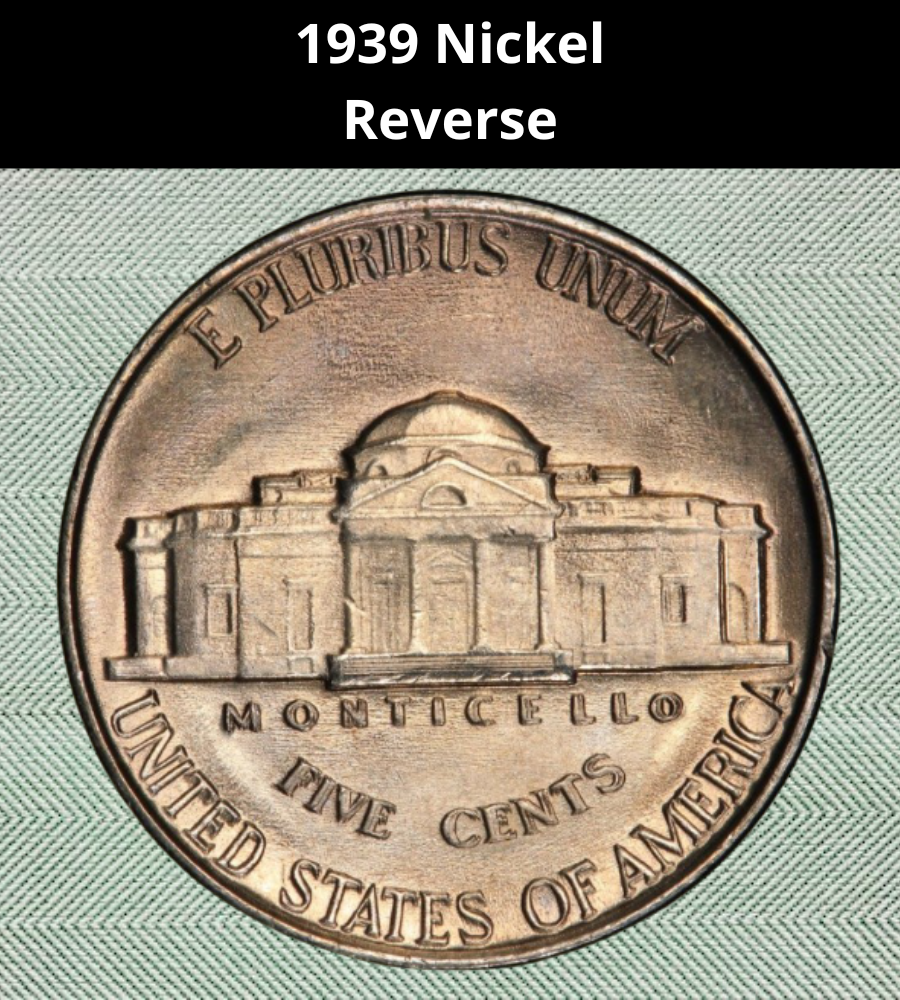
The reverse side of the 1939 nickel features an image of Monticello, the historic Virginia estate of Thomas Jefferson.
Beneath the building, you’ll see the word “MONTICELLO” in bold letters. Just to the right of the structure is the mint mark—if present. If there’s no letter, it was struck in Philadelphia.
The lower rim of the coin reads “UNITED STATES OF AMERICA,” and just above that is the coin’s denomination: “FIVE CENTS.” Along the top edge of the coin is the Latin motto “E PLURIBUS UNUM,” meaning “Out of many, one.”
This clean and balanced layout is part of what has kept the Jefferson nickel design in circulation—with only a few changes—since 1938.
Other Features of the 1939 Nickel
The 1939 Jefferson nickel was composed of 75% copper and 25% nickel, a cost-effective alloy that gave the coin a silver-like appearance without the expense of using actual silver.
Each coin weighs exactly 5 grams and measures 21.21 millimeters in diameter. The edge of the coin is plain and smooth, meaning it has no reeding or grooves—typical for nickels of this era.
This durable composition and standard design have helped ensure the Jefferson nickel remains one of the longest-running coin designs in U.S. history.
1939 Nickel Grading
When grading Jefferson nickels, especially from 1939, there’s an extra detail to watch for: the steps on Monticello. Aside from the standard grading scale that ranges from Poor (PO 1) to Mint State (MS 70), collectors pay close attention to how clearly the steps on the building’s front portico are struck.
Top-quality coins often receive a 5FS (Five Full Steps) or 6FS (Six Full Steps) designation, meaning you can clearly count five or all six of the steps. These details must be uninterrupted by marks or weak strikes.
A Full Steps designation can add hundreds—or even thousands—of dollars to a coin’s value, especially in higher Mint State grades.
Standard Coin Grading Scale
| Grade Number | Grade Name |
|---|---|
| 1 | Basal State-1 |
| 2 | Fair |
| 3 | Very Fair |
| 4–6 | Good |
| 7–10 | Very Good |
| 12–15 | Fine |
| 20–30 | Very Fine |
| 40 | Extremely Fine |
| 50 | About Uncirculated |
| 60 | Mint State (MS) |
| 65 | Gem Mint State |
| 70 | Perfect Mint State |
Be sure to check our grading guides to understand your coin’s condition accurately—it’s an essential step in determining its true market value.
1939 Nickel Value Guides
1939 Nickel With A Reverse Of 1938 Value – All Mint Branches
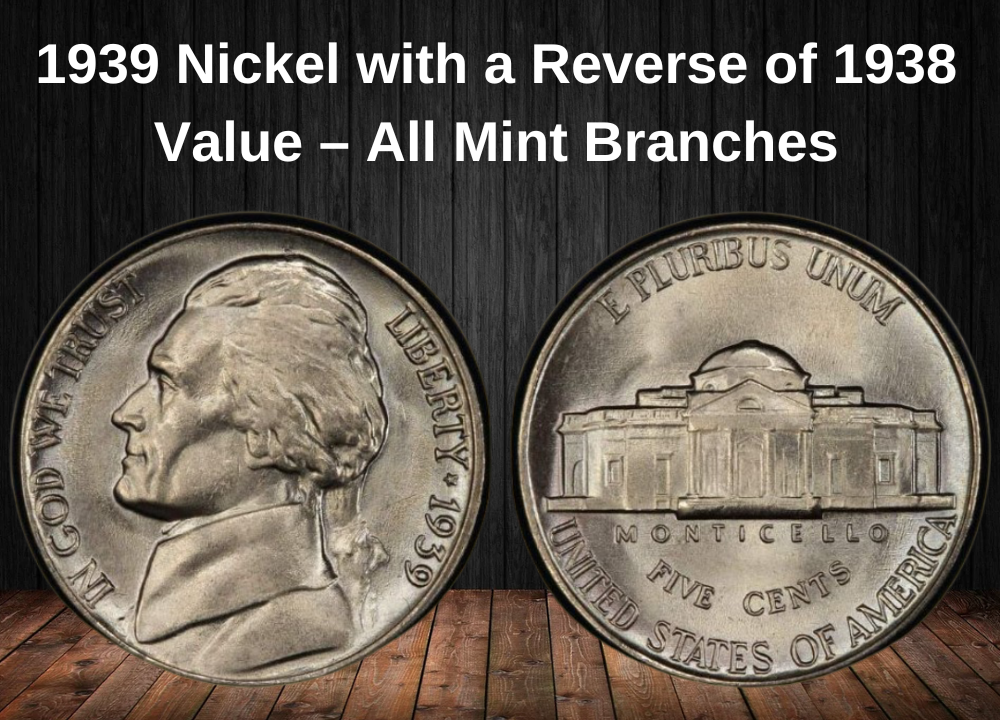
When a new coin design is introduced, the U.S. Mint often goes through several design refinements, especially in the early years. Sometimes, elements from the previous year carry over by mistake or on purpose, creating collectible varieties.
In 1939, some nickels featured the Reverse of 1938, which you can identify by the slightly curved step base on Monticello. Let’s break down the notable auction records and current values by mint mark.
Philadelphia Mint (No Mint Mark)
- MS 68 (Reverse of ’38) – $1,208 (sold in 2021)
- MS 67+ (Reverse of ’38) – $5,500 (as of August 2023)
- MS 67+ Full Steps (FS) – $5,288 (record from 2014)
- MS 67+ FS (current market) – $5,000 (as of August 2023)
Denver Mint (D Mint Mark)
- MS 67+ (Reverse of ’38) – $3,310 (record from 2022)
- MS 67+ (current market) – $673 (as of August 2023)
- MS 66 FS (Reverse of ’38 Full Steps) – $7,475 (record from 2006)
- MS 66 FS (2023 value) – $550
- MS 68 FS (2023 value) – $25,000
San Francisco Mint (S Mint Mark)
- MS 67 (Reverse of ’38) – $1,528 (record from 2013)
- MS 67 (current market) – $275
- MS 67+ (current market) – $850
- MS 66 FS (Reverse of ’38 Full Steps) – $8,050 (record from 2006)
- MS 66 FS (2023 value) – $650
- MS 67 FS (2023 value) – $5,750
Collectors seek out these Reverse of ’38 varieties for their historical significance and rarity—especially in Full Steps grades, where even a small detail can drastically raise a coin’s value.
1939 Nickel with a Reverse of 1940 Value – All Mint Branches

The 1939 Jefferson Nickel exists in two reverse design types — and those struck with the Reverse of 1940 are a favorite among collectors. Unlike overdates (like 1942/1), where you see traces of the underlying year in the date, the Reverse of 1940 variety has no such visible date difference. Instead, the key is on the reverse side, specifically in the design of Monticello’s steps. The 1940 version features strong, straight steps, offering more visual clarity.
Let’s look at auction records and current values for these nickels across all three mint facilities.
Philadelphia Mint – No Mint Mark
- MS 67 – 💰 $1,725 (record price, 2005)
- MS 67 (current market, Aug 2023) – $150
- MS 68+ (current market, Aug 2023) – $3,000
Full Steps (FS):
- MS 68 FS – 💰 $23,500 (record price, 2014)
- MS 68 FS (current value, Aug 2023) – $6,000
Denver Mint – “D” Mint Mark
- MS 67 – 💰 $1,093 (record price, 2006)
- MS 67 (current market, Aug 2023) – $275
- MS 69 (current market, Aug 2023) – $2,750
Full Steps (FS):
- MS 68 FS – 💰 $26,400 (record price, 2019)
- MS 68 FS (current value, Aug 2023) – $27,500
San Francisco Mint – “S” Mint Mark
- MS 67 – 💰 $1,150 (record price, 2005)
- MS 67 (current market, Aug 2023) – $1,350
Full Steps (FS):
- MS 67 FS – 💰 $7,800 (record price, 2020)
- MS 67 FS (current value, Aug 2023) – $8,500
1939 (P) No Mint Mark Proof Nickel Value
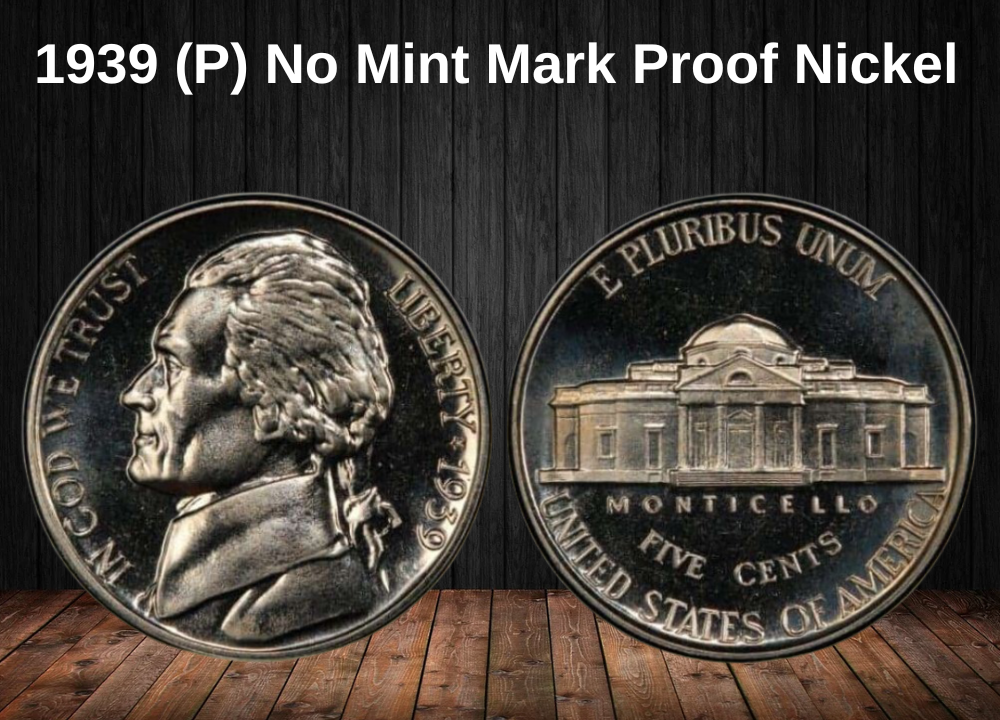
If you’ve come across a highly reflective nickel from 1939, you might be looking at a proof coin—a specially made piece prized by collectors.
These coins aren’t your average pocket change. Proof nickels are struck with extra care using a process that involves polished dies and carefully treated planchets. The result? A coin with mirror-like surfaces and frosted designs—what collectors call a “cameo” effect.
To achieve this striking appearance:
- The design elements (like Jefferson or Monticello) were given a light frost using a chemical treatment on the dies.
- Meanwhile, the blank coins—called planchets—were burnished, meaning they were rolled with tiny stainless steel balls to smooth and shine them before being struck.
Unlike regular circulation coins, proof nickels were never intended for everyday use. They served as presentation pieces and high-quality examples for collectors or the Mint’s own records.
In 1939, Philadelphia was the only mint to produce proof nickels, and they came with no mint mark. A total of 12,535 proof coins were struck that year.
Interestingly, these coins came with two different reverse designs:
- Reverse of 1938, which shows rounded step details on Monticello.
- Reverse of 1940, featuring sharper, straighter steps.
There’s no official “Reverse of 1939”, so all proof coins from that year fall under one of these two categories.
Quick Value Overview
| Grade | Reverse of 1938 | Reverse of 1940 |
|---|---|---|
| PR 68 | $4,750 | $14,500 |
Lower-grade proof coins (PR 60–67) can still command strong prices, often ranging from $100 to $3,000, depending on condition and clarity.
1939 (P) No Mint Mark Proof Nickel Reverse of ‘38 Value

Back in 1939, the Philadelphia Mint struck 12,535 proof nickels, all without a mint mark. A portion of these featured the Reverse of 1938, recognizable by its softer, rounded step details on Monticello.
One impressive example graded PR68 reached a peak price of $18,400 at auction on August 7, 2010. However, as more of these high-grade coins surfaced—PCGS now lists nearly 20 at this level—the market adjusted. By August 2023, their value settled around $5,500.
The top of the grading scale shows even more exclusivity. Only three coins have been certified at PR68+, and those command a premium of approximately $17,500 each.
1939 (P) No Mint Mark Proof Nickel Reverse of ‘40 Value
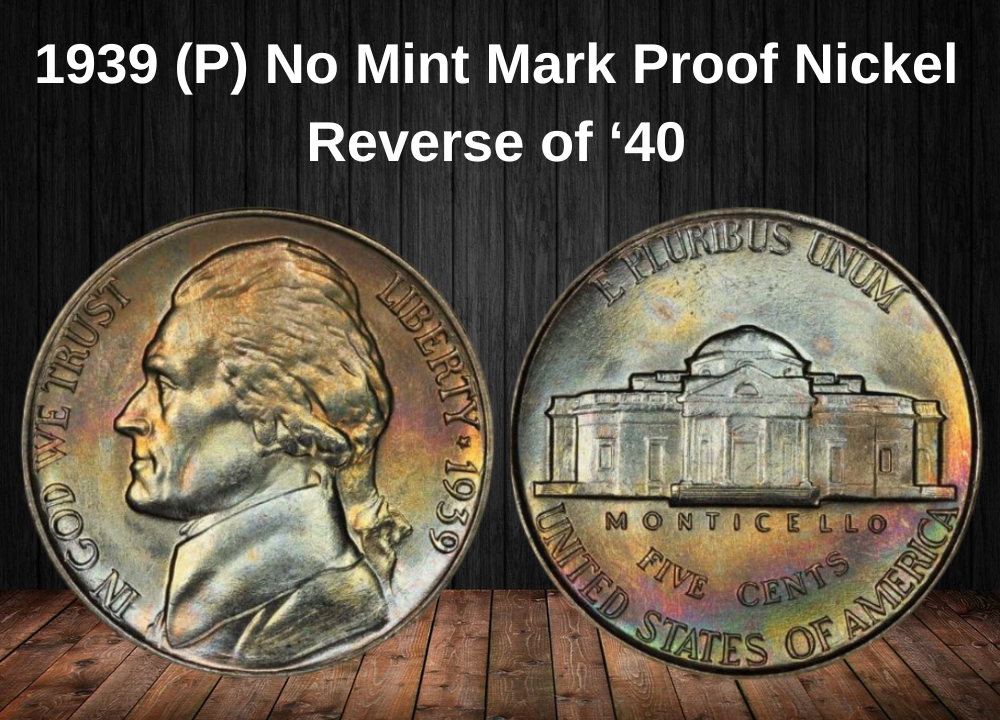
The Reverse of 1940 variety of the 1939 proof nickel has seen some notable sales. A specimen graded PR68 fetched $15,600 at auction on June 6, 2022. As of May 2025, the PCGS has certified only three coins at this grade, valuing them at around $14,500.
In addition, a PR67 Cameo (CAM) example sold for $10,350 on April 8, 2012. With just two such coins certified by PCGS to date, their current market value is estimated at approximately $5,750 as of May 2025.
Rare 1939 Nickel Error List
1939 (P) Nickel with Reverse of 1940 – Doubled Die Obverse
As mentioned earlier, the mule varieties on 1939 nickels were intentional, so they’re classified as varieties rather than errors. However, the Doubled Die Obverse (DDO) only appears on the Philadelphia (no mint mark) coins.
This flaw occurred because the die shifted slightly between strikes, causing the design to be doubled and transferred to all coins struck from that die. You can spot this by looking closely at the inner curves of “God” and the “939” in the date.
Despite its uniqueness, this variety isn’t very pricey. For example, a coin graded MS67 sold on eBay in 2021 for $797.
1939 (P) Nickel Doubled Monticello DDR
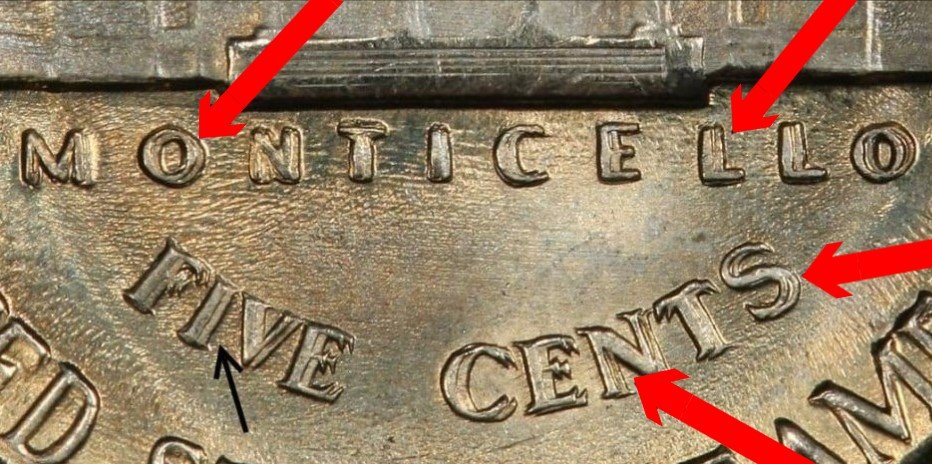
DDR stands for Doubled Die Reverse, which is a similar error to the doubled die obverse but occurs on the back side of the coin.
If you use a coin microscope or jeweler’s loupe, you’ll see a noticeable doubling effect on the inscriptions, especially on the words “Monticello” and “Five Cents.”
In terms of value:
- An MS 67 sold for $4,600 in 2002
- An MS 67+ is worth about $6,000 in 2023
- The MS 67 FS (Full Steps) grade commanded $23,500 in 2019 but dropped to $11,500 in 2023
1939 (P) Nickel Quadrupled Die Obverse – QDR FS-802
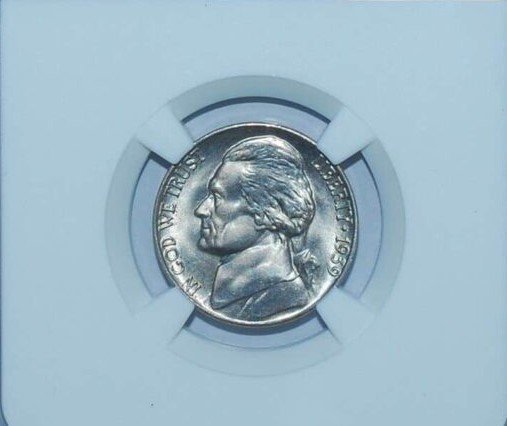
Most coins are struck multiple times to ensure the design is fully transferred. This process also happens during the die creation itself, when a hub strikes the die.
Doubled-die errors occur when the hub strikes the die more than once but slightly misaligned. In this case, the hub struck the die four times in slightly different positions, causing a quadrupled die (QDR) effect.
This particular variety is known as QDR FS-802.
Value examples:
- An MS 65 sold for $441 in 2013
- An MS 67 FS fetched $3,055
Where to sell your nickel?
Now that you’re aware of your nickel’s value, you may be curious about the best places to sell it. Don’t worry: here’s a rundown of some top online marketplaces where you can conveniently sell your nickels, along with their benefits and drawbacks.
Explore the best platforms for selling nickels online (advantages and disadvantages).
FAQ about 1939 Buffalo Nickels (Clarification)
1. Were any Buffalo Nickels minted in 1939?
No, the Buffalo Nickel series was officially discontinued after 1938 and replaced by the Jefferson Nickel in 1938. There are no genuine 1939 Buffalo Nickels.
2. Why do some coins appear with a 1939 date in Buffalo Nickel style?
These are typically fantasy pieces, altered coins, or counterfeits created by hobbyists or for novelty. They hold no official numismatic value and are not recognized by the U.S. Mint.
3. Can a 1939 Buffalo Nickel have any collector value?
Generally, no. Because they are unofficial and often considered altered or fantasy coins, they lack intrinsic collector value and can even be seen as problematic in a collection.
4. What replaced the Buffalo Nickel after 1938?
The Jefferson Nickel was introduced in 1938 and remains the U.S. five-cent coin design today, replacing the Buffalo Nickel.
5. How can collectors avoid counterfeit or fantasy Buffalo Nickels?
- Verify coin dates and mint marks with reputable references
- Buy from trusted dealers or auction houses
- Use third-party grading services to authenticate coins
6. Are there other interesting Buffalo Nickel dates that are rare or valuable?
Yes, key dates like the 1913 Type 2, 1916-D, 1921, and 1937-D “Three and a Half Leg” are prized among collectors.
7. Where can I learn more about genuine Buffalo Nickels and their varieties?
Numismatic guides, official U.S. Mint publications, and specialized coin collecting books/websites provide detailed information on Buffalo Nickels.

